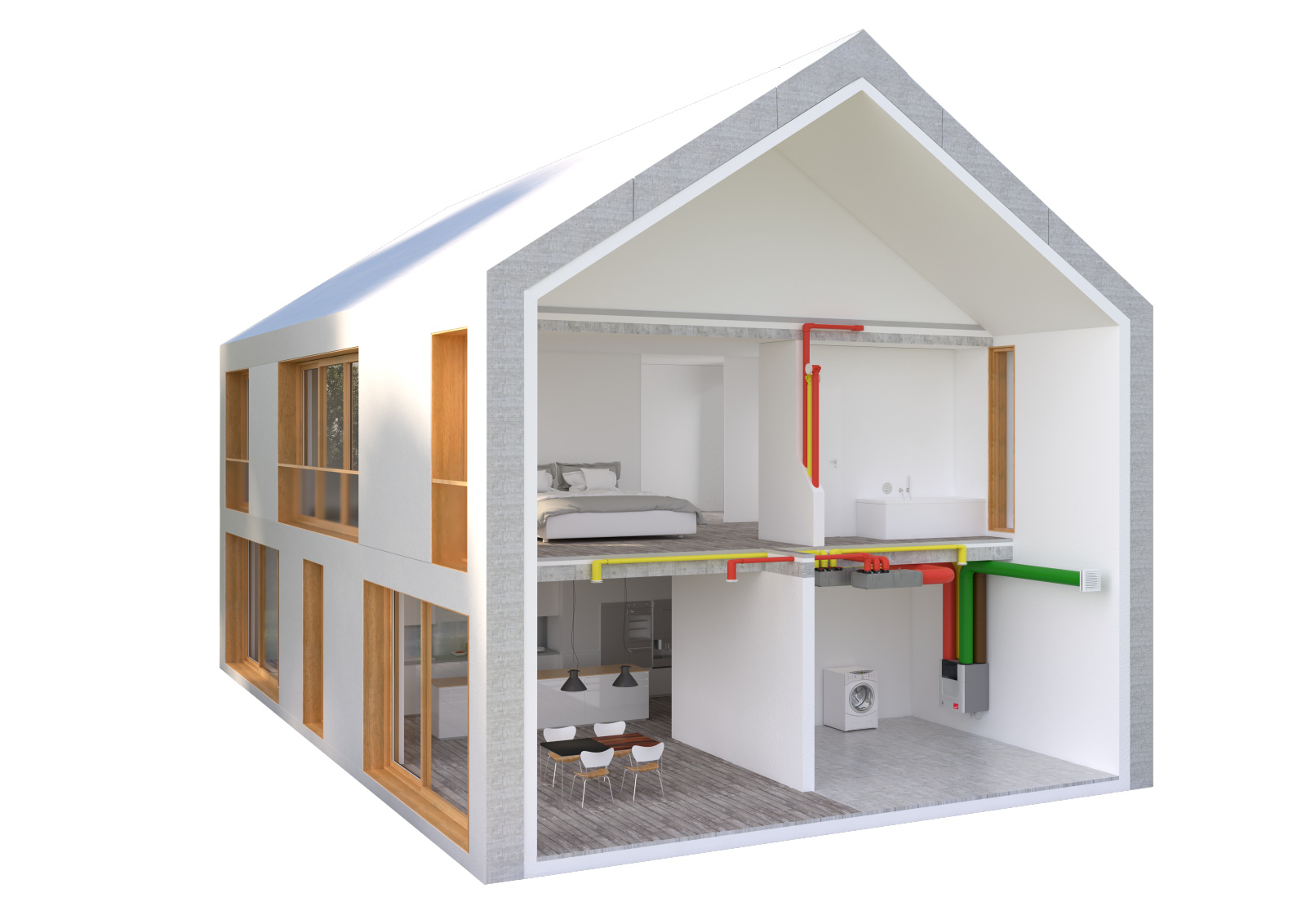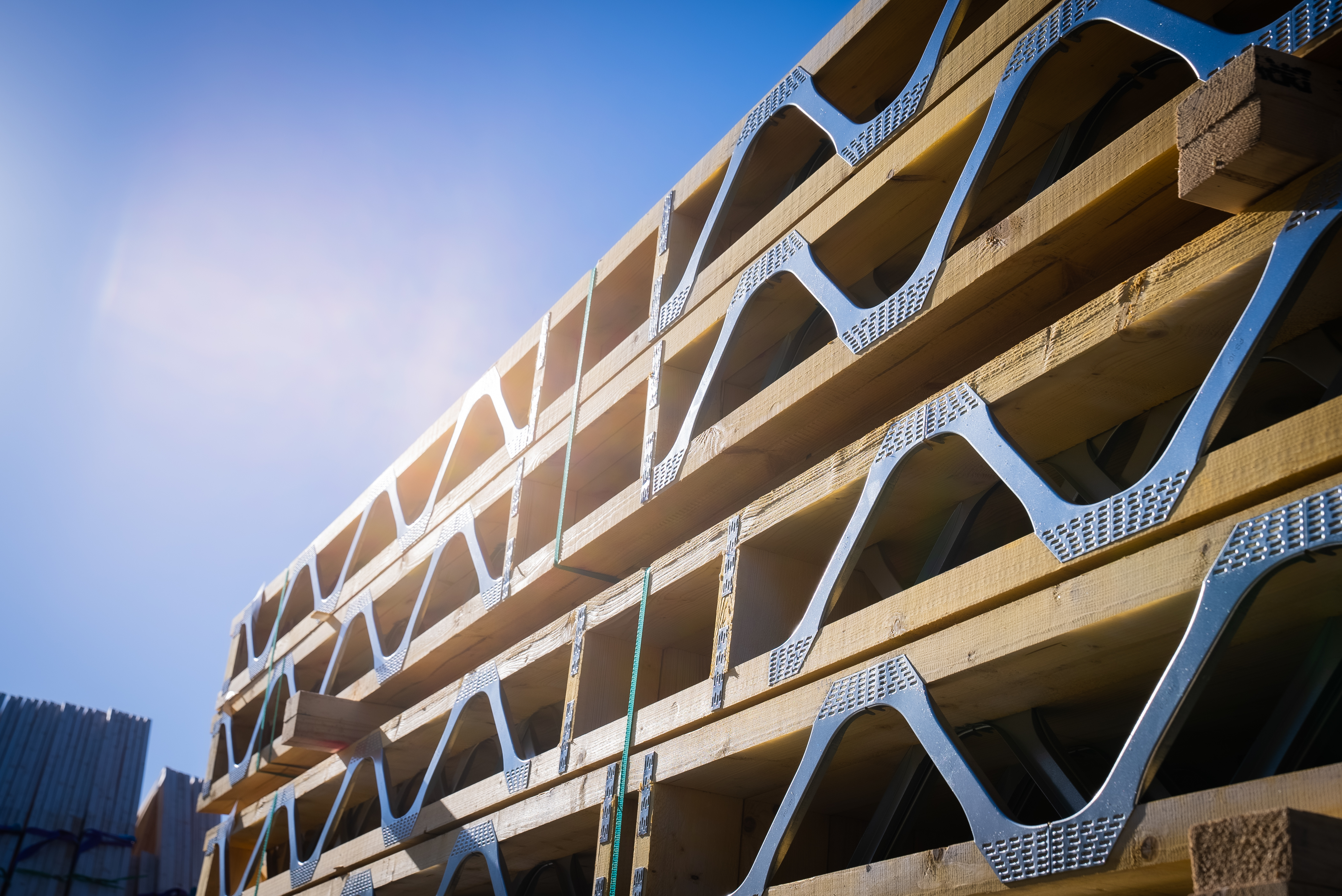The Future Homes Standard: Paving the way for sustainable and energy-efficient homes. MiTek Commercial Director Tim Garner unpicks the FHS and takes a look at some of the projects already leading the way
 The Future Homes Standard represents a significant step forward in building sustainable and energy-efficient homes, ensuring a minimum level of efficiency and carbon reduction of 75-80% compared to current regulations for new homes built from 2025. This forward-thinking initiative is set to revolutionise the way homes are constructed and lived in, with numerous benefits and some notable challenges.
The Future Homes Standard represents a significant step forward in building sustainable and energy-efficient homes, ensuring a minimum level of efficiency and carbon reduction of 75-80% compared to current regulations for new homes built from 2025. This forward-thinking initiative is set to revolutionise the way homes are constructed and lived in, with numerous benefits and some notable challenges.
How the Future Homes Standard regulations are shaping up
The conclusion of the consultation on the Future Homes Standard in December 2023 marked a significant milestone. Now industry eagerly awaits the introduction of the Standard in 2025. The primary goal is to mandate that new homes be equipped with low-carbon heating and exhibit world-leading energy efficiency levels.
With the latest plans from the government for a UK national target of 300,000 new homes per year, the construction industry needs to dovetail what can be achieved through the Future Homes Standard smartly, with sustainability technologies top of mind.
The Future Homes Standard addresses changes to Part L (Conservation of Fuel and Power) and Part F (Means of Ventilation) of the Building Regulations. It sets a high bar for new dwellings. The introduction of Part O ensures buildings are airtight yet well-ventilated, preventing overheating. Effective airflow is crucial for Part O compliance, and MiTek’s Posi-Joist system, with its open webbed design, is a great help to the building industry, thanks to its ability to accommodate MVHR (Mechanical Ventilation and Heat Recovery) and heat pump systems, in addition to other services.

The bright side of the Future Homes Standard – Significant progress is underway
Proactive steps are already being taken by the UK housebuilding industry. Initiatives such as eHome2 at the University of Salford and Taylor Wimpey’s Whittle Gardens in Gloucester are leading examples, showcasing homes built to anticipated Future Homes Standards. These projects not only highlight the feasibility of the new regulations but also their potential to reshape housing construction.
Bellway Homes is also trailblazing and exploring how the technologies tested at eHome2 can be rolled out and deployed at scale.
At its 1600-home Barton Quarter development in Horwich, Lancashire, four of Bellway Homes standard house types have been designed to Future Homes Standard requirements, each incorporating a combination of different technologies.
At Plot 256, Mechanical Ventilation and Heat Recovery (MVHR) has been the focus, and MiTek is part of the team that has been looking at how to design and build incorporating MVHR most effectively.
Zehnder’s MVHR system was installed, with zero clashes for trades on-site, because it fits so well with MiTek’s open web Posi-Joist system. The house achieved a SAP (Standard Assessment Procedure) rating of 97, well above the SAP score of 92 which secures an EPC rating A.

The new Home Energy Model – replacing SAP
When the Future Homes Standard comes in, SAP will be replaced by a new assessment, the Home Energy Model (HEM), which will be the methodology to demonstrate that new dwellings comply with the Future Homes Standard. This assessment is still under development.
The new regulations will bring many benefits, from drastically reducing the greenhouse gas emissions of around 20% UK homes currently account for, to improved energy efficiency and lower bills for homeowners, and enhanced living.
What will be the main challenges the sector faces with the new regulations? Industry is worried about higher upfront costs, training and skills, while ensuring the supply chain can deliver in terms of materials and low carbon technologies.

MiTek’s role in shaping the future
MiTek is at the forefront of technologies and products supporting the Future Homes Standard. Key contributions include Posi-Joist and our PAMIR software, which has been used across multiple trial projects with industry leaders to explore the opportunities and help define the path forward.
These innovation projects not only meet but exceed the requirements of the Future Homes Standard, showcasing how advanced design and technology can integrate seamlessly into modern housing. Our focus on Design Engagement – working with housebuilders at an early stage in the design process – and the Design-Make-Build philosophy that looks at opportunities around off-site construction both fit perfectly with Future Homes Standard ambitions.
MiTek has recently invested £1.5 million in new manufacturing capabilities. We’re committed to enhancing MiTek design software to meet industry-led demand for Posi-Joists for both new builds and retrofits. There is undoubtedly going to be greater demand in UK construction for sustainable solutions.

A future-forward vision
Do we welcome the Future Homes Standard? Absolutely. It will make achieving Net Zero by 2050 more attainable, benefiting the entire UK housebuilding industry. The Future Homes Standard represents a significant step forward in building sustainable and energy-efficient homes, aiming to create a more environmentally-friendly housing stock for the future.
As we approach 2025, the construction industry must embrace innovation and collaboration to build homes that enhance the quality of life for future generations.
The journey towards a sustainable future is a collective effort, and the Future Homes Standard is a crucial step in the right direction. Let’s embrace this change and work together to create homes that are truly fit for the future.
